The Use of UAVs for Land Use Planning of Brownfield Regeneration Projects-Case Study: Former Brick Factory, Cluj Napoca, Romania
Abstract
1. Introduction
1.1. Brownfields Approach, in the Context of Urban Development
1.2. UAV-UAS (Unmanned Aerial Vehicle-Unmanned Aerial System)
1.3. The Main Purpose of the Study
2. Materials and Methods
2.1. Study Area
Geographical Description
2.2. Equipment Used
2.2.1. TS-Total Station
2.2.2. GNSS (Global Satellite Navigation Satellite System)
2.2.3. Drone (Unmanned Aerial Vehicle)
- Adjustable parameters for emissivity and reflective surfaces;
- 12 MP 1/2.3″ CMOS camera;
- Dynamic zoom: 2× Optical and 3× Digital;
- Data analysis using GPS Timestamping.
3. Results
3.1. Results Following Measurements Using Classic Technology
3.2. Results Following Measurements Using UAV Technology
- -
- The UAV (Unmanned Aerial Vehicle) has a medium resolution camera (12 megapixels), and despite the fact that it has 4× lossless zoom (including 2× optical zoom), the required quality of the photos would not have been obtained in a flight at a higher altitude.
- -
- A lower flight altitude would have put the drone at risk since the respective area is populated and adjacent to tall trees, medium-height buildings, and cranes for construction sites in the area.
3.3. Realization of the 3D Model
3.4. Realization of the Topographical Plan
3.5. Results Obtained
3.6. Volumetric Study
4. Discussion
5. Conclusions
Author Contributions
Funding
Data Availability Statement
Conflicts of Interest
References
- Environmental Protection Agency. Summary of the Small Business Liability Relief and Brownfields Revitalization Act. Available online: https://www.epa.gov/brownfields/summary-small-business-liabilityrelief-and-brownfields-revitalization-act (accessed on 21 November 2022).
- Gregorová, B.; Hronček, P.; Tometzová, D.; Molokáč, M.; Čech, V. Transforming Brownfields as Tourism Destinations and Their Sustainability on the Example of Slovakia. Sustainability 2020, 12, 10569. [Google Scholar] [CrossRef]
- Yagci, E.; Nunes da Silva, F. The Future of Post-Industrial Landscapes in East Lisbon: The Braço de Prata Neighborhood. Sustainability 2021, 13, 4461. [Google Scholar] [CrossRef]
- Hyka, I.; Hysa, A.; Dervishi, S.; Solomun, M.K.; Kuriqi, A.; Vishwakarma, D.K.; Sestras, P. Spatiotemporal Dynamics of Landscape Transformation in Western Balkans’ Metropolitan Areas. Land 2022, 11, 1892. [Google Scholar] [CrossRef]
- De Sousa, C.; Wu, C.; Westphal, L. Assessing the Effect of Publicly Assisted Brownfield Redevelopment on Surrounding Property Values. Econ. Dev. Q. 2009, 23, 95–110. [Google Scholar] [CrossRef]
- Haninger, K.; Ma, L.; Timmins, C. The Value of Brownfield Remediation. J. Assoc. Environment. Resour. Econ. 2017, 4, 197–241. [Google Scholar] [CrossRef]
- Kiel, K.A.; Williams, M. The Impact of Superfund Sites on Local Property Values: Are All Sites the Same? J. Urban Econ. 2007, 61, 170–192. [Google Scholar]
- McClusky, J.J.; Rausser, G.C. HazardousWaste Sites and Housing Appreciation Rates. J. Environ. Econ. Manag. 2003, 45, 166–176. [Google Scholar] [CrossRef]
- Jackson, T. Environmental Contamination and Industrial Real Estate Prices. J. Real Estate Res. 2002, 23, 179–200. [Google Scholar] [CrossRef]
- Trouw, M.; Weiler, S.; Silverstein, J. Brownfield Development: Uncertainty, Asymmetric Information, and Risk Premium. Sustainability 2020, 12, 2046. [Google Scholar] [CrossRef]
- Blazy, R.; Łabuz, R. Spatial Distribution and Land Development Parameters of Shopping Centers Based on GIS Analysis: A Case Study on Kraków, Poland. Sustainability 2022, 14, 7539. [Google Scholar] [CrossRef]
- Vojvodíková, B.; Fojtík, R.; Tichá, I. Design and Verification of a Simple Approach to Brownfields Categorization. Sustainability 2021, 13, 11206. [Google Scholar] [CrossRef]
- Goussios, D.; Faraslis, I. Integrated Remote Sensing and 3D GIS Methodology to Strengthen Public Participation and Identify Cultural Resources. Land 2022, 11, 1657. [Google Scholar] [CrossRef]
- Sertić, H.; Paar, R.; Tomić, H.; Ravlić, F. Influence of Flight Height and Image Sensor on the Quality of the UAS Orthophotos for Cadastral Survey Purposes. Land 2022, 11, 1250. [Google Scholar] [CrossRef]
- Sanhudo, L.; Ramos, N.M.M.; Martins, J.P.; Almeida, M.S.F.; Barreira, E.; Simoes, M.L.; Cardoso, V. A framework for in -situ geometric data acquisition using laser scanning for BIM modeling. J. Build. Eng. 2020, 28, 101073. [Google Scholar] [CrossRef]
- Shao, J.; Zhang, W.; Mellado, N.; Wang, N.; Jin, S.; Cai, S.; Luo, L.; Lejemble, T.; Yan, G. SLAM-aided forest plot mapping combining terrestrial and mobile laser scanning. ISPRS J. Photogramm. Remote Sens. 2020, 163, 214–230. [Google Scholar] [CrossRef]
- Hosseininaveh, A.A.; Sargeant, B.; Erfani, T.; Robson, S.; Shortis, M.; Hess, M.; Boehm, J. Towards fully automatic reliable 3D acquisition: From designing imaging network to a complete and accurate point cloud. Robot. Autumn. Syst. 2014, 62, 1197–1207. [Google Scholar] [CrossRef]
- Zhang, X.; Zhao, P.; Hu, Q.; Ai, M.; Hu, D.; Li, J. A UAV-based panoramic oblique photogrammetry (POP) approach using spherical projection. ISPRS J. Photogramm. Remote Sens. 2020, 159, 198–219. [Google Scholar] [CrossRef]
- Saadati, S.; Abbasi, M.; Abbasy, S.; Amiri-Simkooei, A. Geodetic calibration network for total stations and GNSS receivers in sub-kilometer distances with sub-millimeter precision. Measurement 2019, 141, 258–266. [Google Scholar] [CrossRef]
- Lutz, K. 61-years of working aerial photogrammetry history. Photogram. Eng. Remote Sens. 2015, 81, 89–93. [Google Scholar]
- Kavaliauskas, P.; Židanavičius, D.; Jurelionis, A. Geometric Accuracy of 3D Reality Mesh Utilization for BIM-Based Earthwork Quantity Estimation Workflows. ISPRS Int. J. Geo-Inf. 2021, 10, 399. [Google Scholar] [CrossRef]
- Crommelinck, S.; Bennett, R.; Gerke, M.; Yang, M.Y.; Vosselman, G. Contour Detection for UAV-Based Cadastral Mapping. Remote Sens. 2017, 9, 171. [Google Scholar] [CrossRef]
- Zhou, Y.; Rupnik, E.; Meynard, C.; Thom, C.; Pierrot-Deseilligny, M. Simulation and Analysis of Photogrammetric UAV Image Blocks—Influence of Camera Calibration Error. Remote Sens. 2020, 12, 22. [Google Scholar] [CrossRef]
- Stöcker, C.; Nex, F.; Koeva, M.; Gerke, M. High-Quality UAV-Based Orthophotos for Cadastral Mapping: Guidance for Optimal Flight Configurations. Remote Sens. 2020, 12, 3625. [Google Scholar] [CrossRef]
- Varga, Z.; Vörös, F.; Pál, M.; Kovács, B.; Jung, A.; Elek, I. Performance and Accuracy Comparisons of Classification Meth-ods and Perspective Solutions for UAV-Based Near-Real-Time “Out of the Lab” Data Processing. Sensors 2022, 22, 8629. [Google Scholar] [CrossRef] [PubMed]
- Orsini, C.; Benozzi, E.; Williams, V.; Rossi, P.; Mancini, F. UAV Photogrammetry and GIS Interpretations of Extended Ar-chaeological Contexts: The Case of Tacuil in the Calchaquí Area (Argentina). Drones 2022, 6, 31. [Google Scholar] [CrossRef]
- Sestras, P.; Bilașco, Ş.; Rosca, S.; Veres, I.; Elias, N.; Hysa, A.; Spalević, V.; Cîmpeanu, S.M. Multi-Instrumental Approach to Slope Failure Monitoring in a Landslide Susceptible Newly Built-Up Area: Topo-Geodetic Survey, UAV 3D Modeling and Ground-Penetrating Radar. Remote Sens. 2022, 14, 5822. [Google Scholar] [CrossRef]
- Kyriou, A.; Nikolakopoulos, K.; Koukouvelas, I.; Lampropoulou, P. Repeated UAV Campaigns, GNSS Measurements, GIS, and Petrographic Analyses for Landslide Mapping and Monitoring. Minerals 2021, 11, 300. [Google Scholar] [CrossRef]
- Leica TCR 405 Total Station. Available online: www.leica-geosystems.com (accessed on 20 May 2022).
- Romanian Position Determination System. Available online: www.rompos.ro (accessed on 27 September 2022).
- GNSS Geomax Zenith 10. Available online: https://geomax-positioning.com/products/gnss (accessed on 17 August 2022).
- DJI Mavic 2 Enterprise, Zoom Edition. Available online: https://www.dji.com/mavic-2-enterprise (accessed on 27 September 2022).
- ETERRA. Available online: https://geoportal.ancpi.ro/geoportal/imobile/Harta.html (accessed on 20 February 2022).
- Drone Deploy, Drone Mapping Software. Available online: www.dronedeploy.com (accessed on 20 February 2022).
- Agisoft Metashape. Available online: https://www.agisoft.com/features/professional-edition/ (accessed on 19 January 2022).
- Topo, L.T. Surveying Software. Available online: www.topolt.com (accessed on 20 May 2022).
- Info Cluj. Available online: www.infocluj.eu (accessed on 18 January 2022).
- Arhimar—Architecture Office. Available online: www.arhimar.ro (accessed on 10 February 2022).
- EUROSTAT—European Institute of Statistics. Available online: https://composite-indicators.jrc.ec.europa.eu/cultural-creative-cities-monitor/countries-and-cities/cluj-napoca (accessed on 24 November 2022).

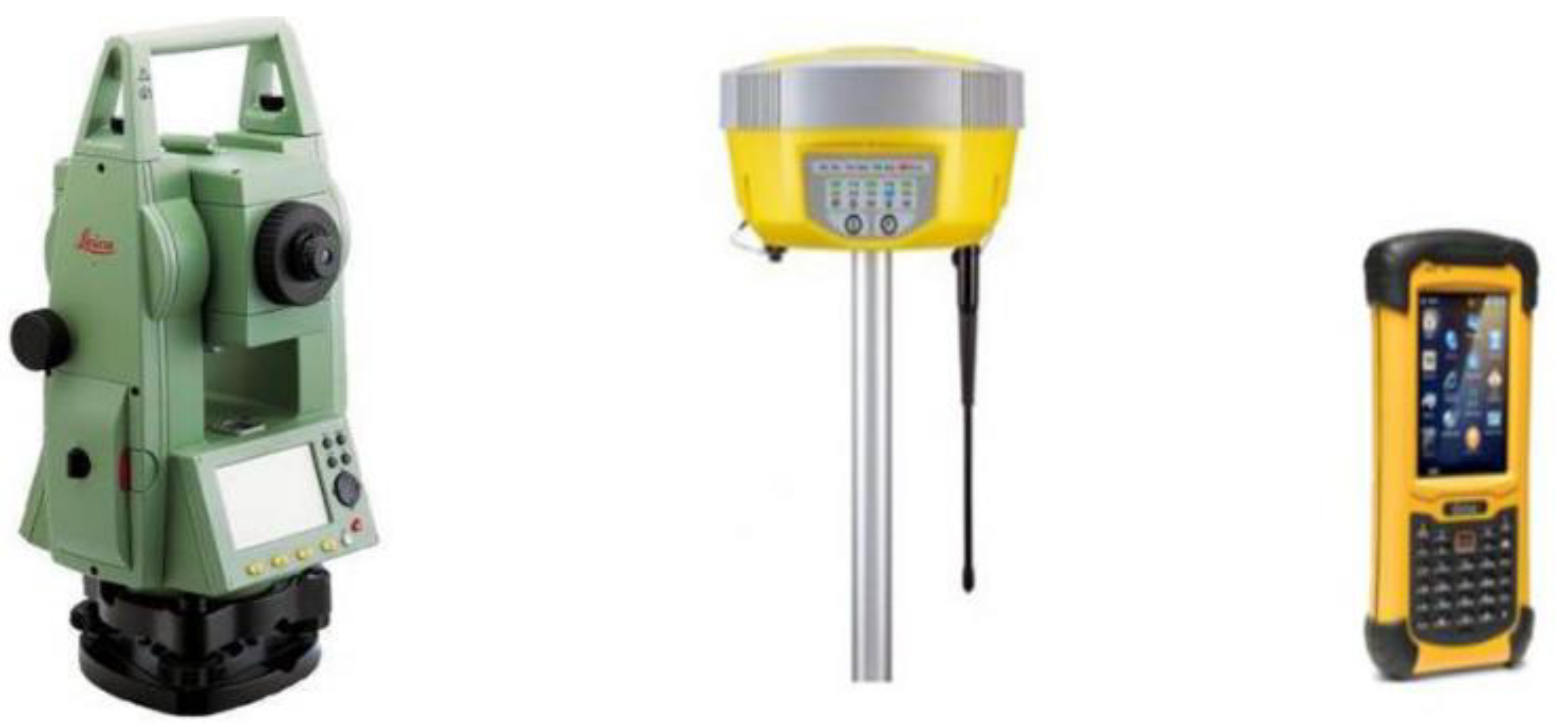
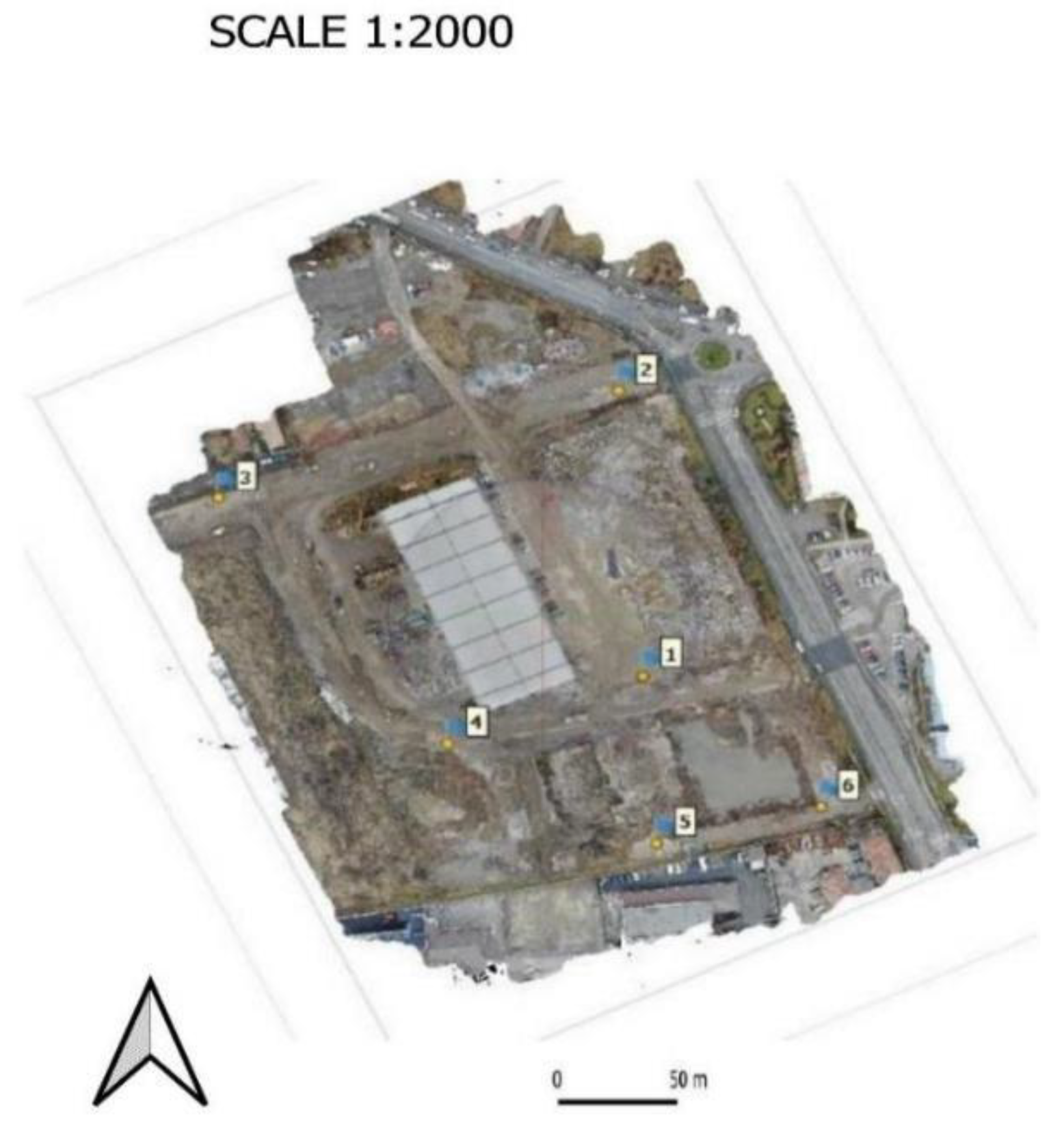
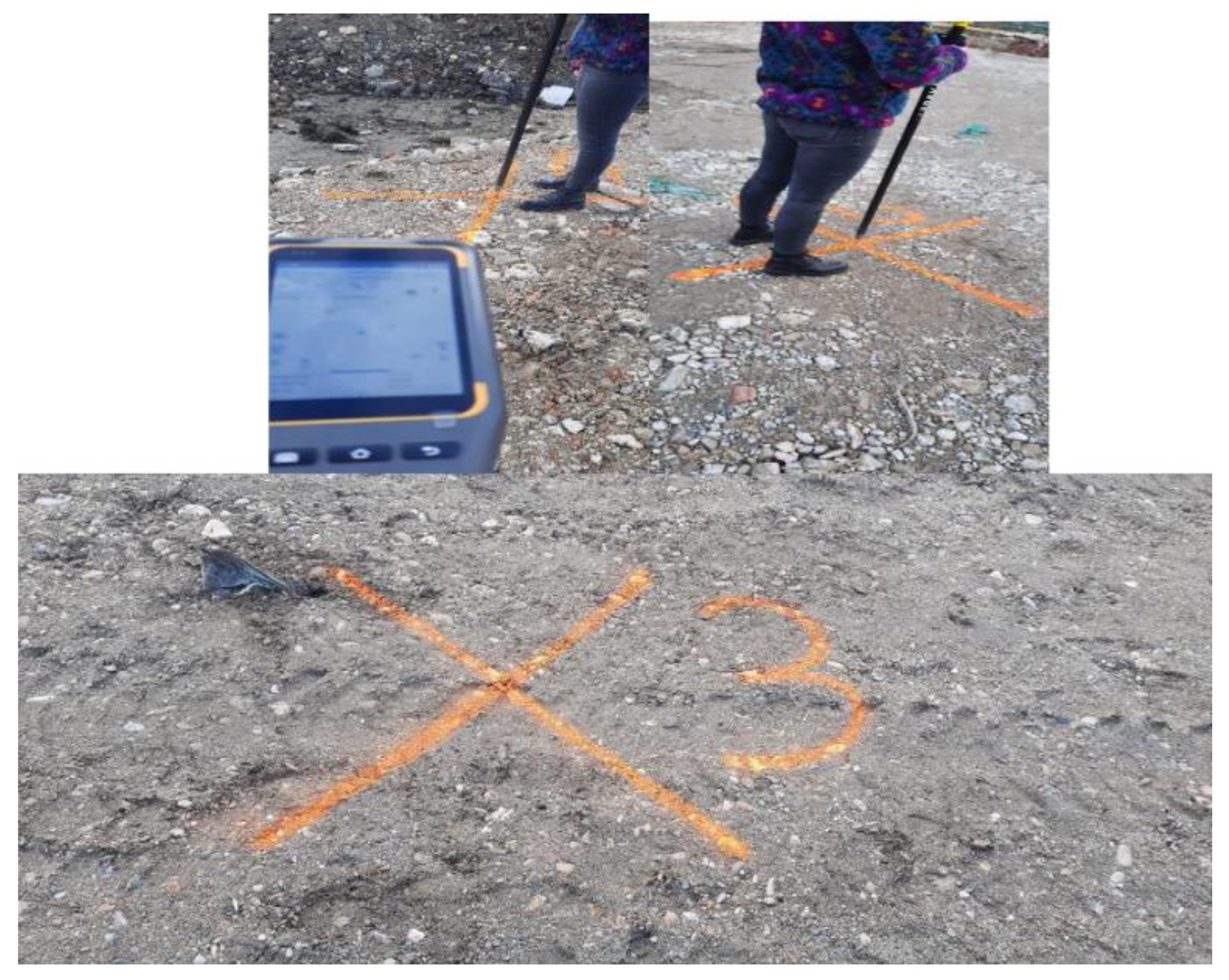
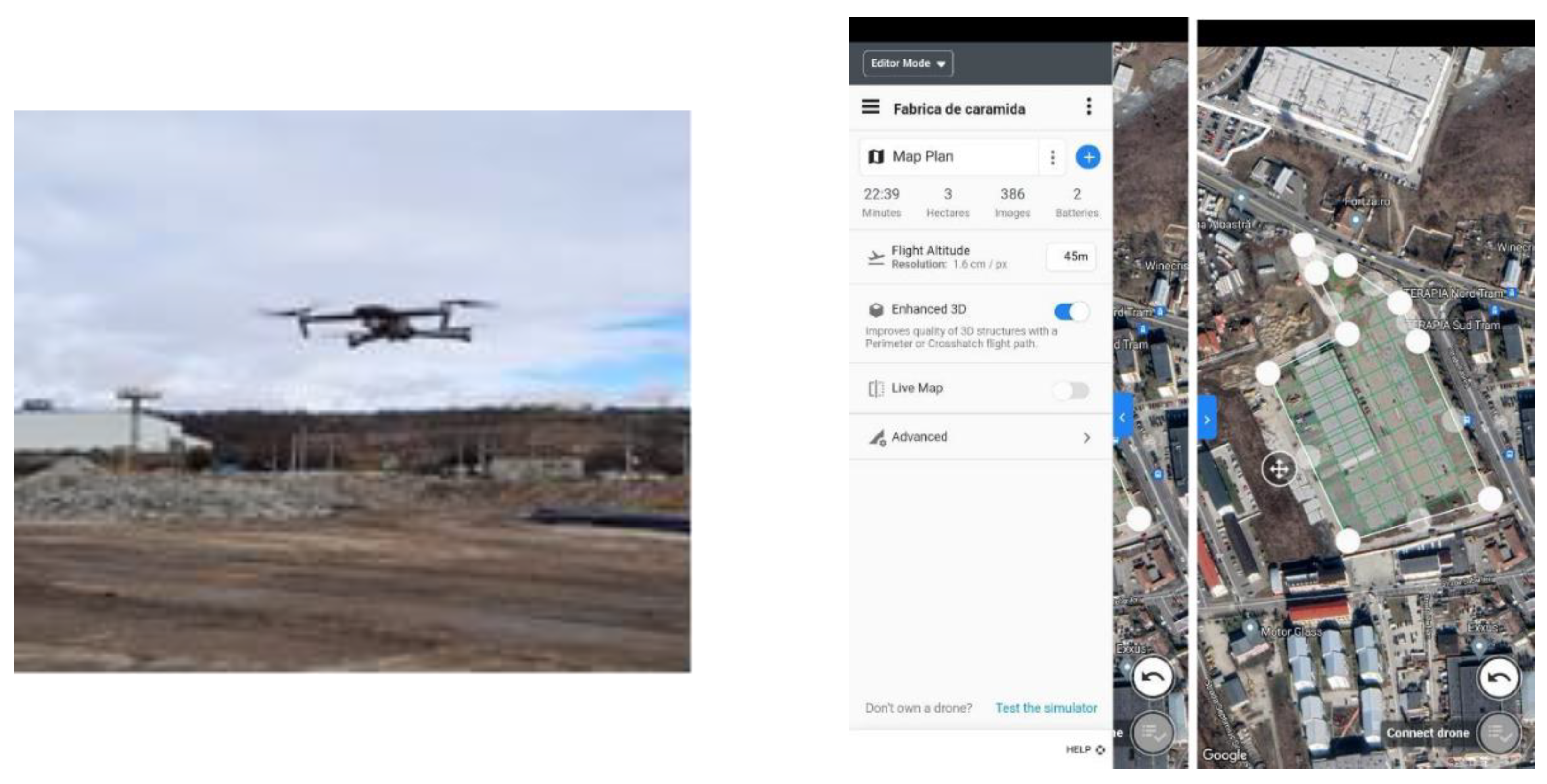
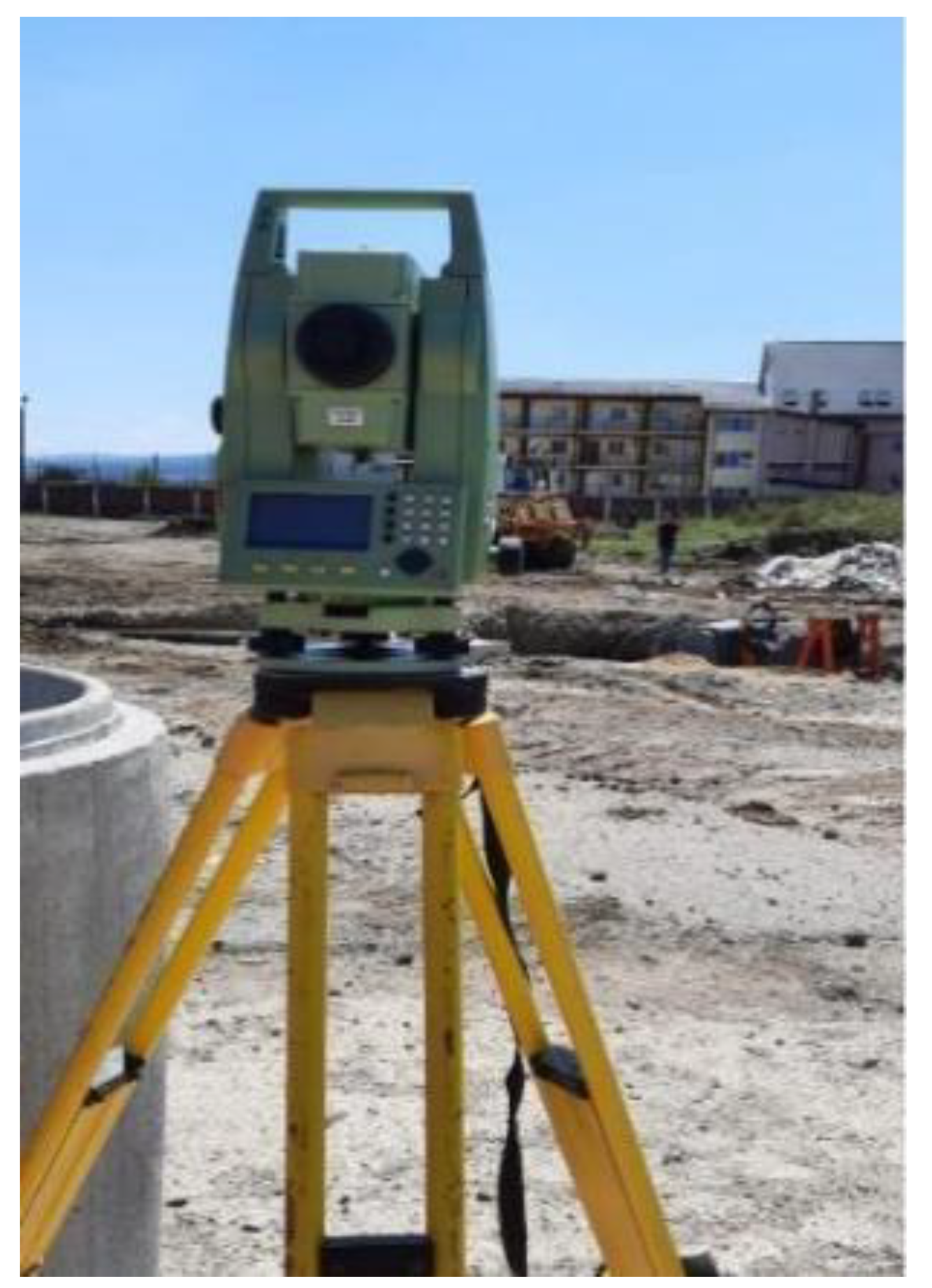
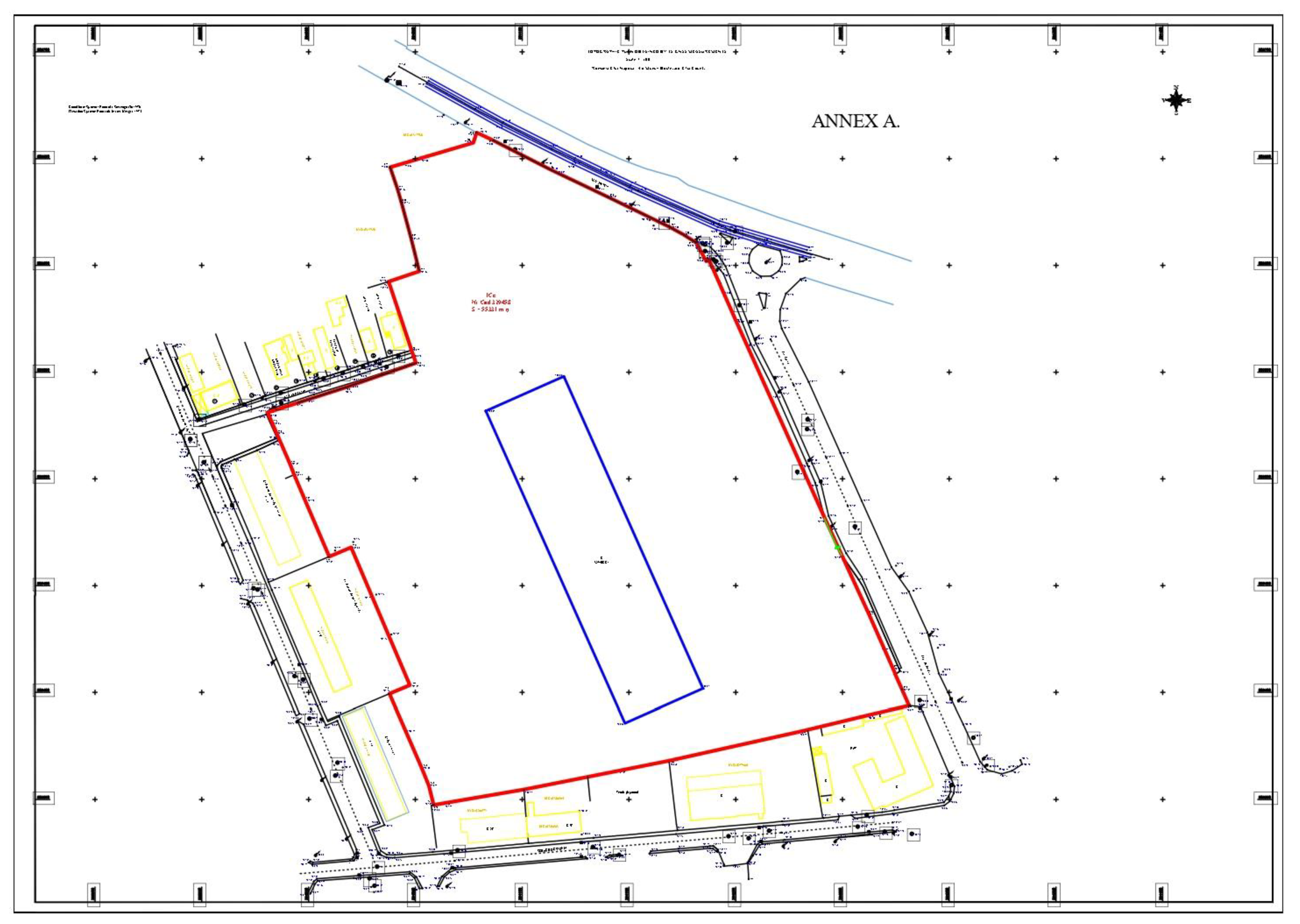

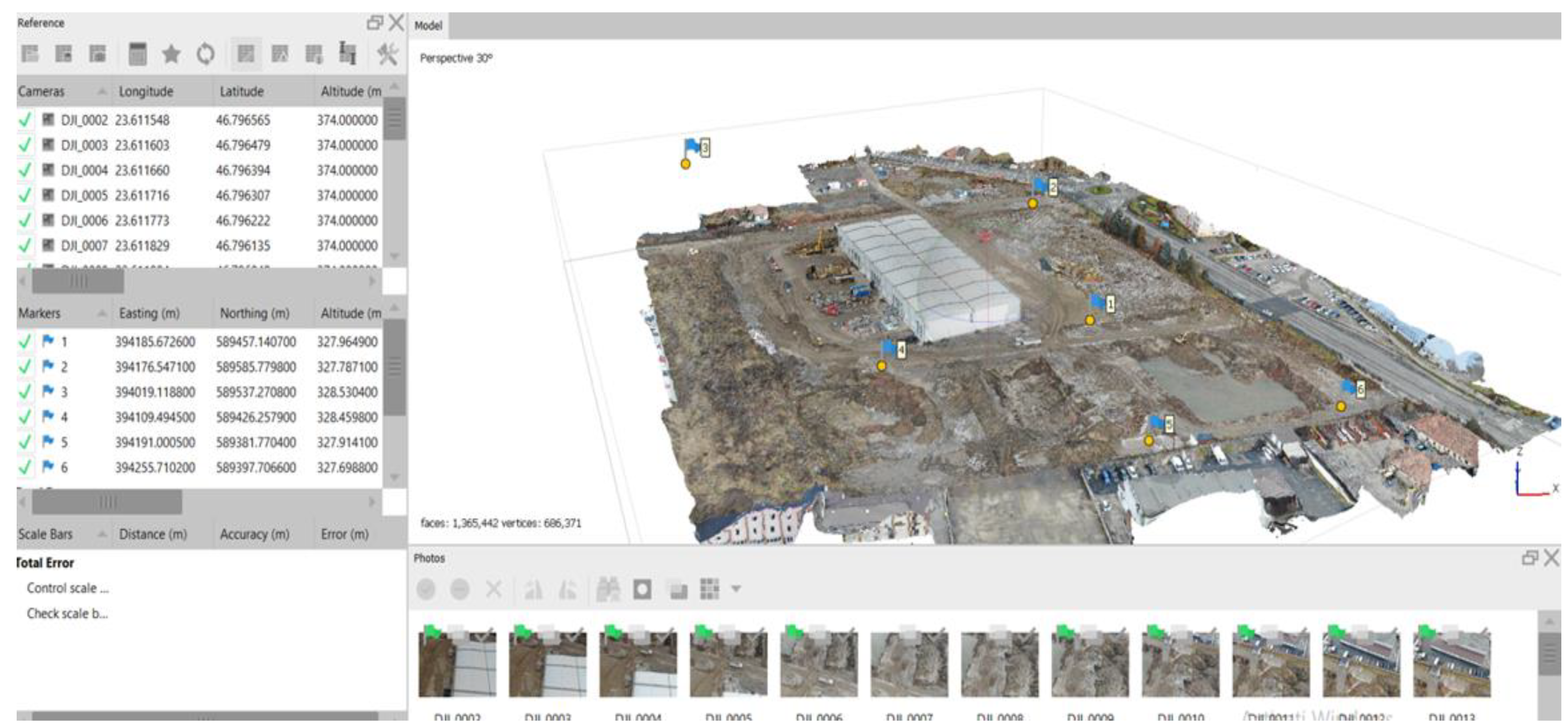
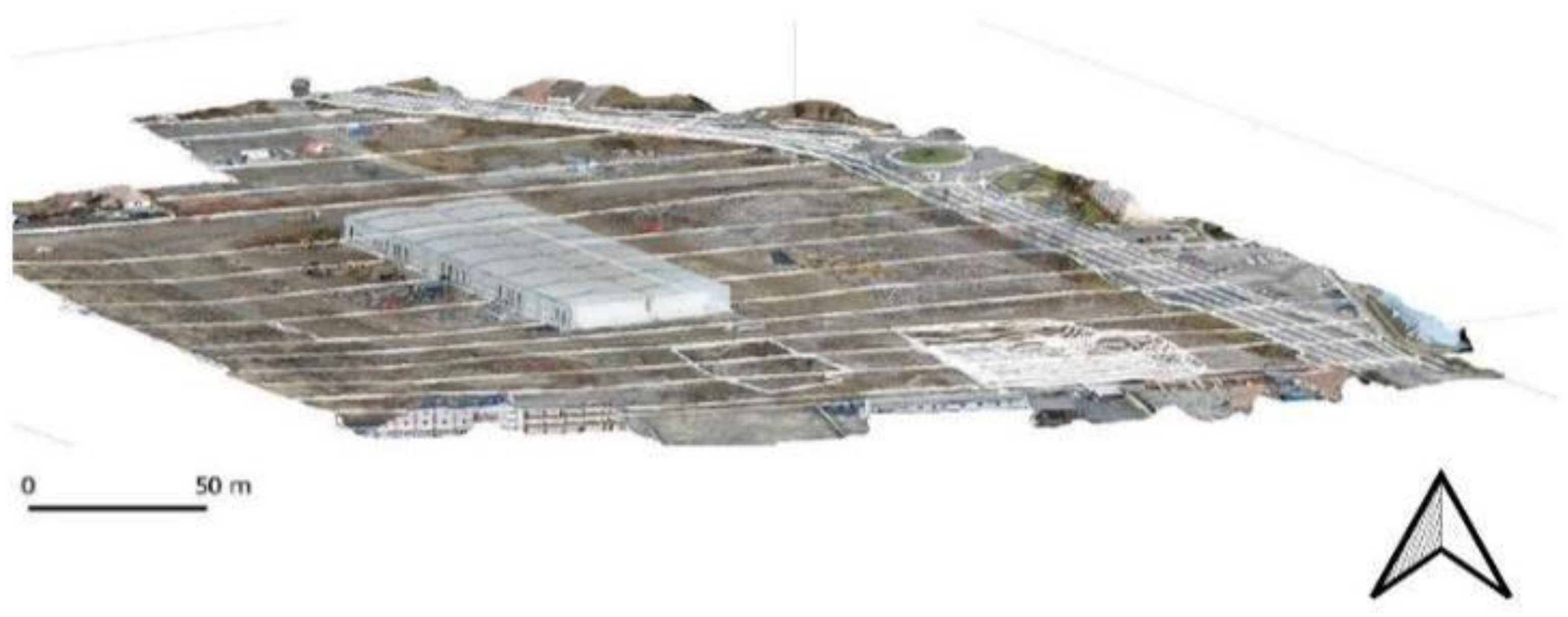
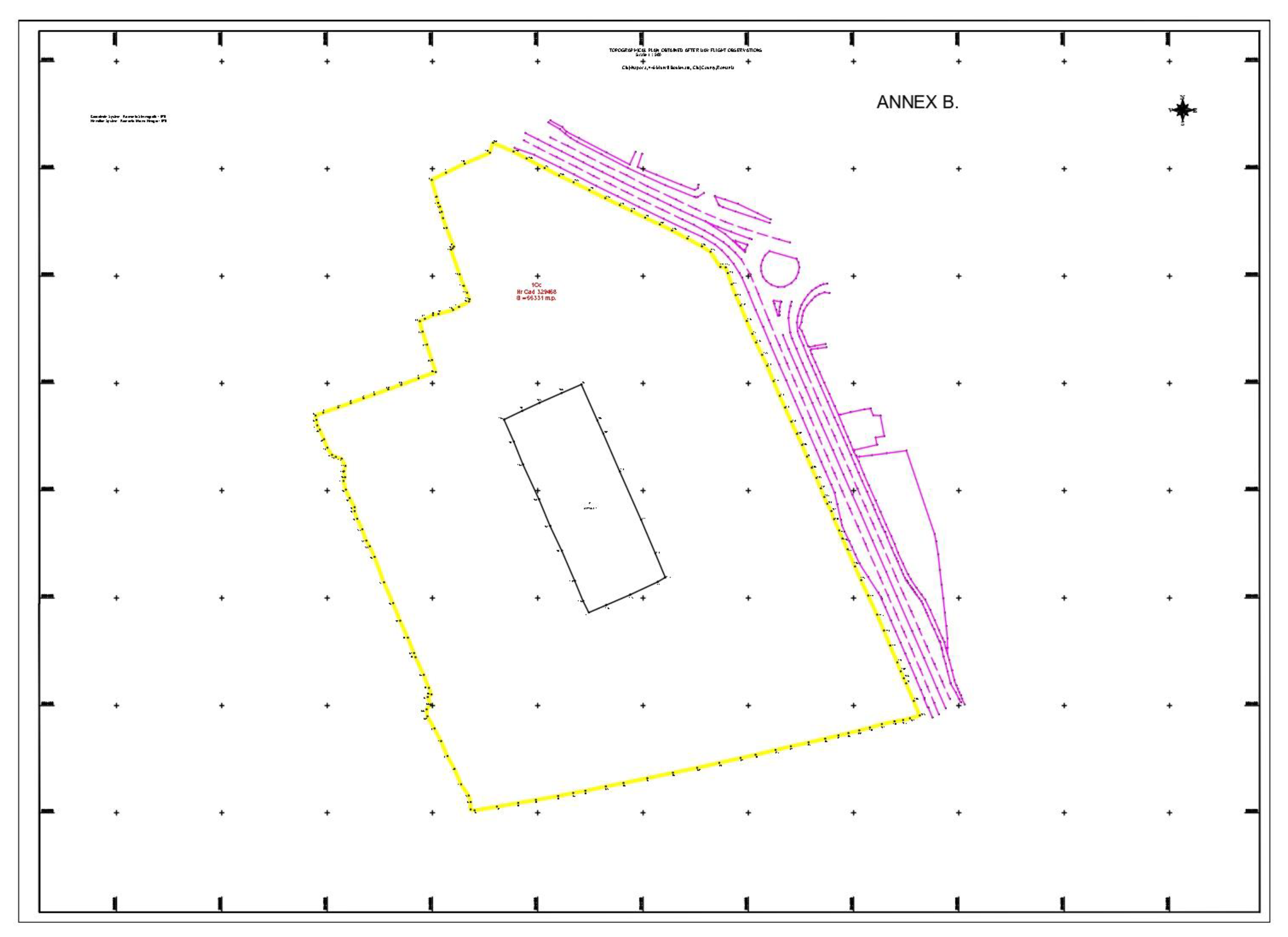
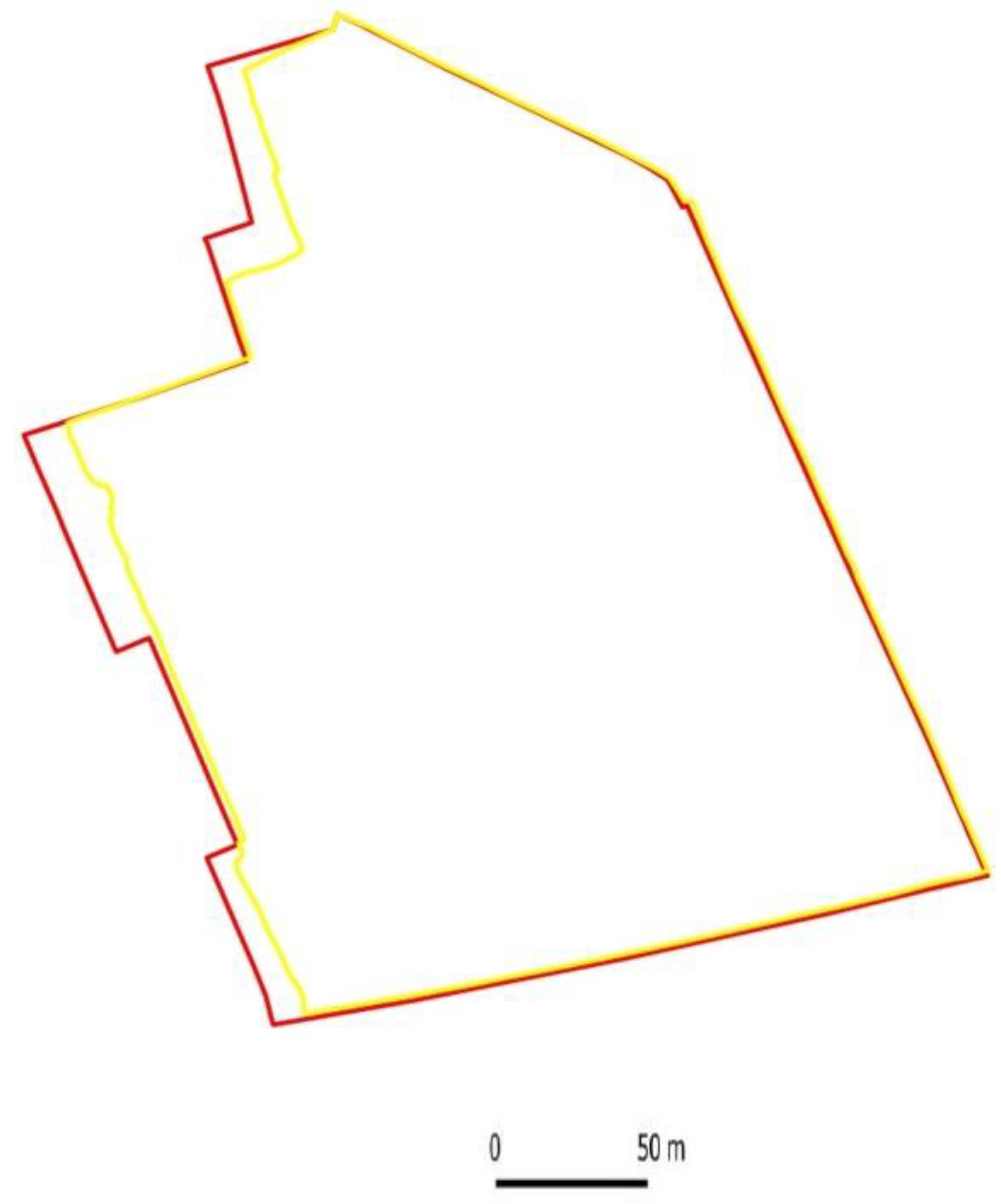
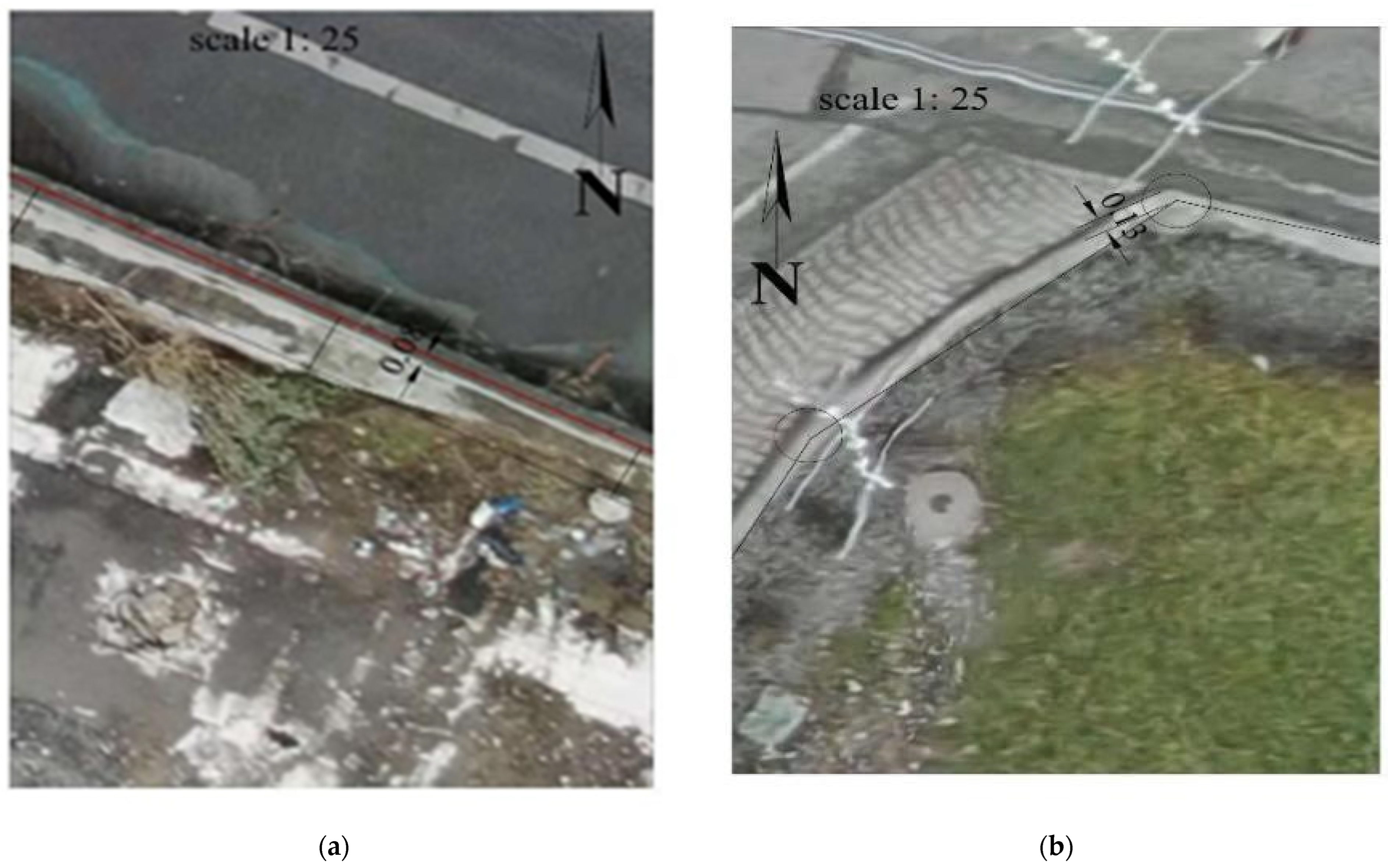
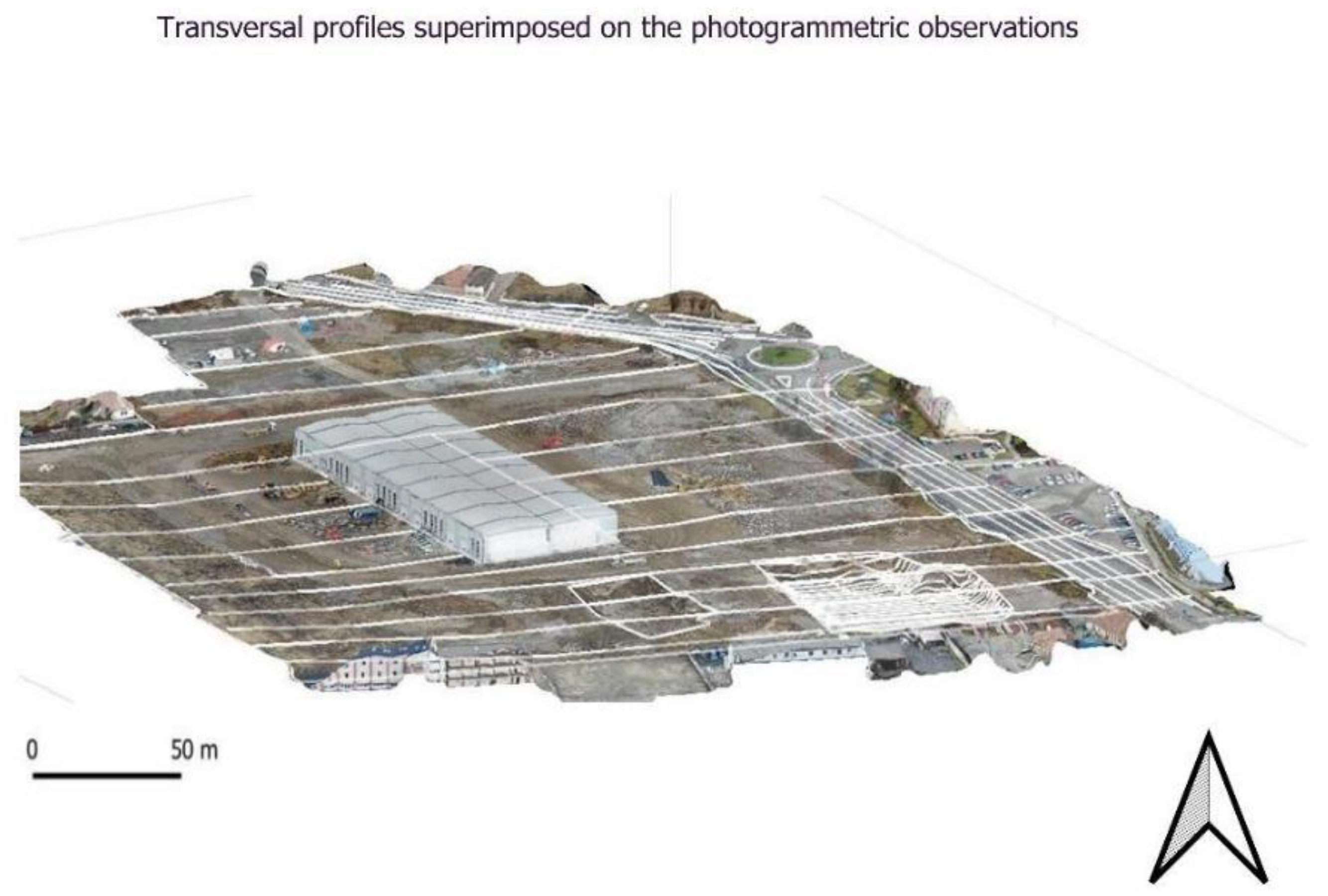
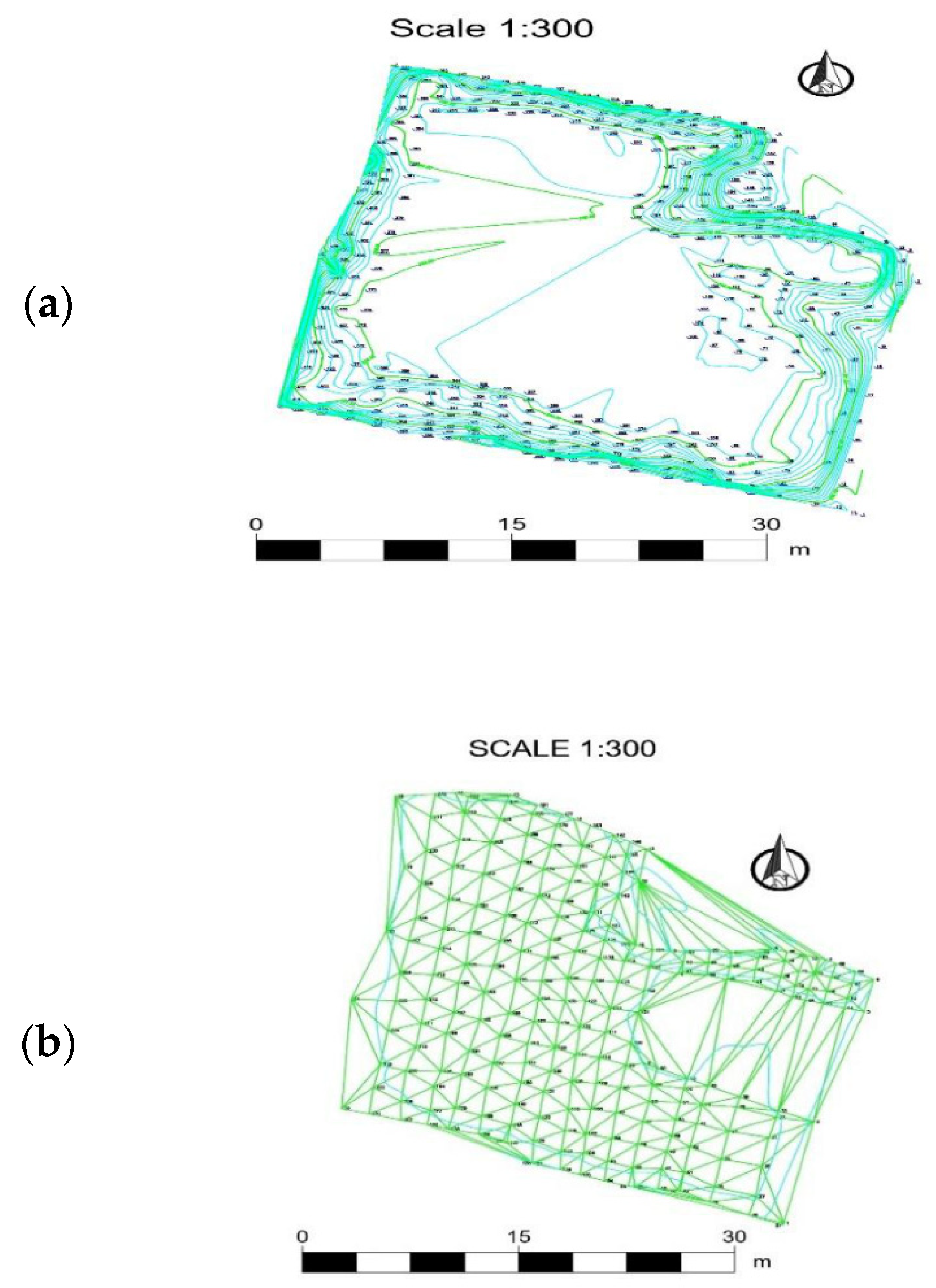
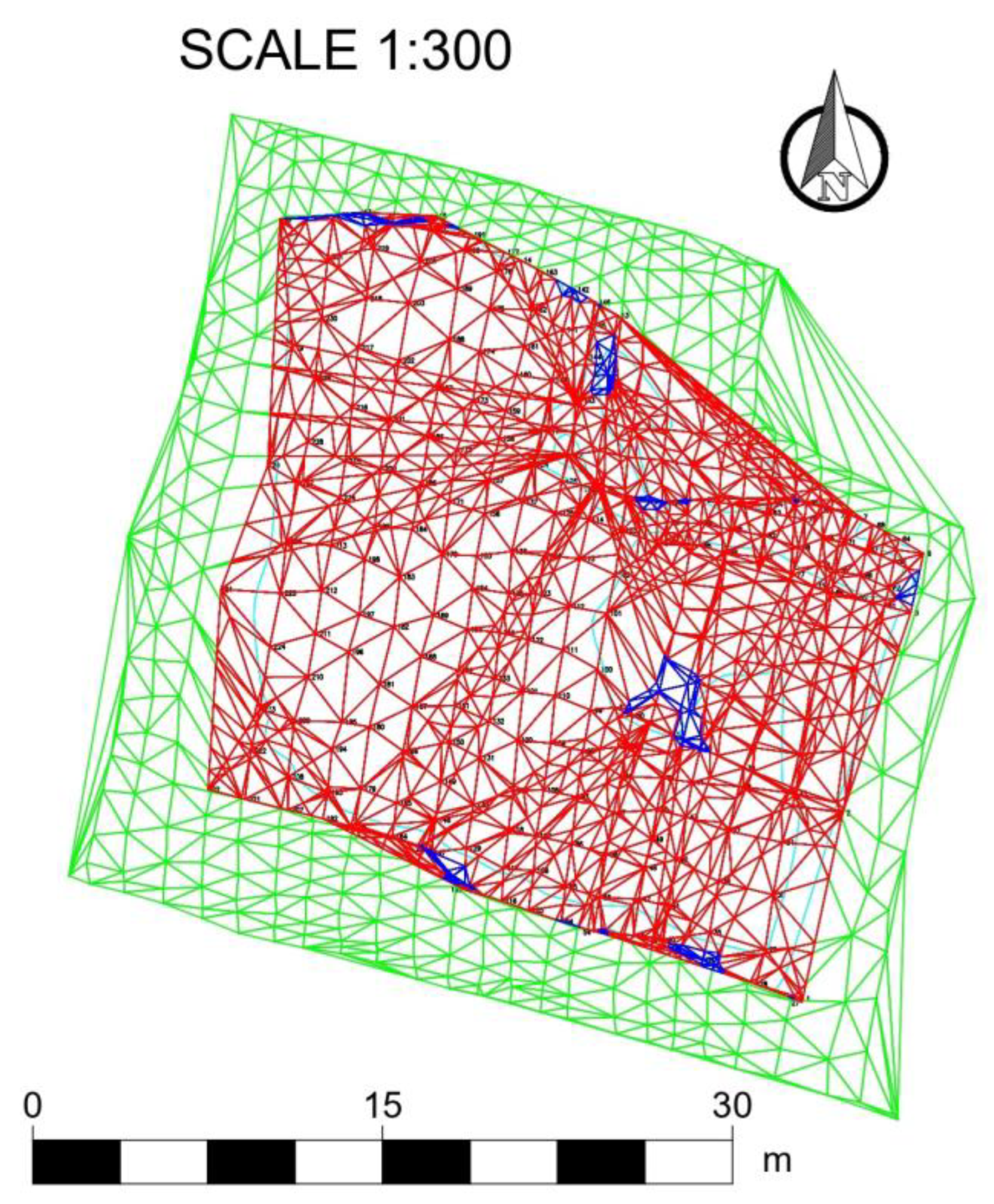
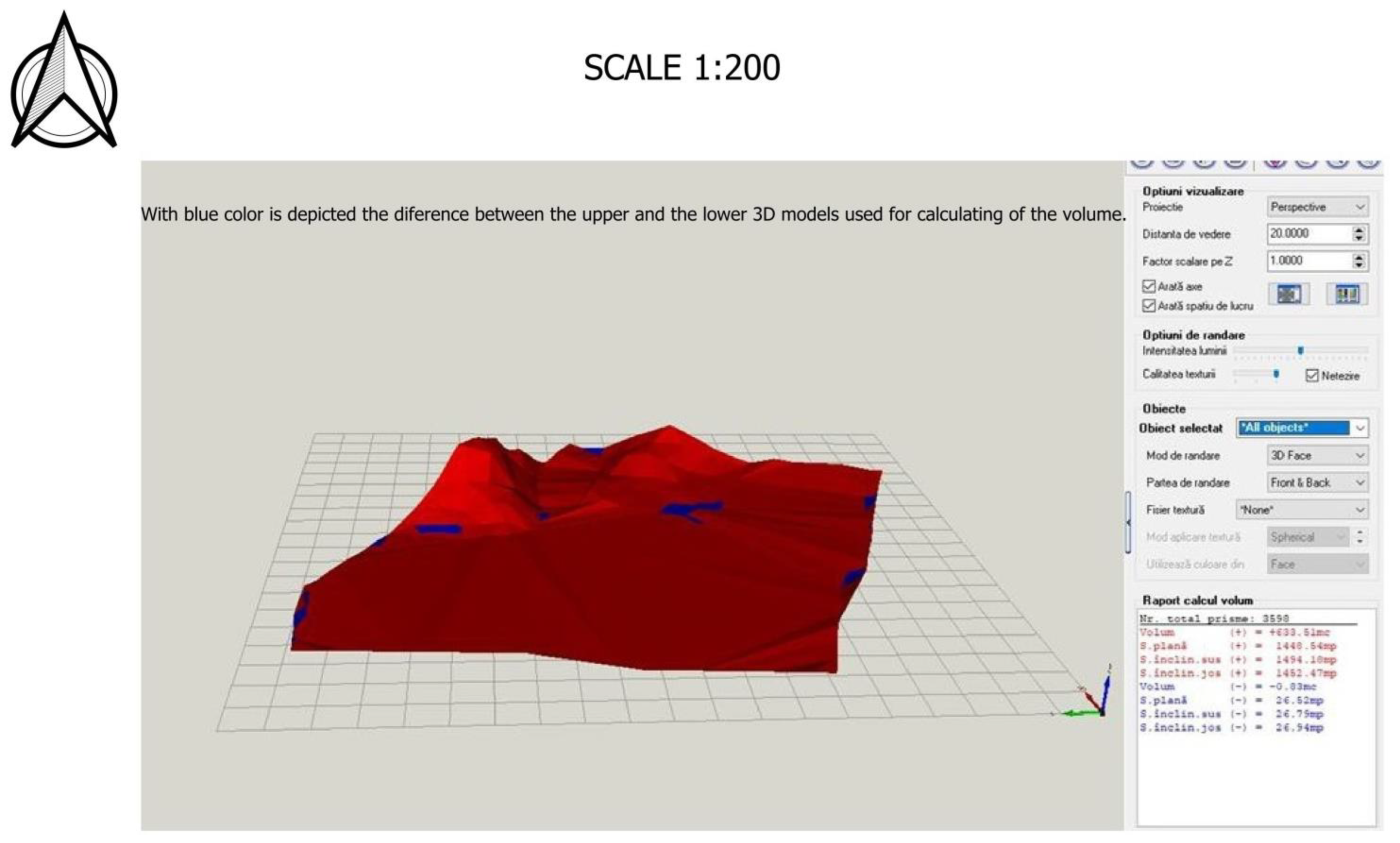
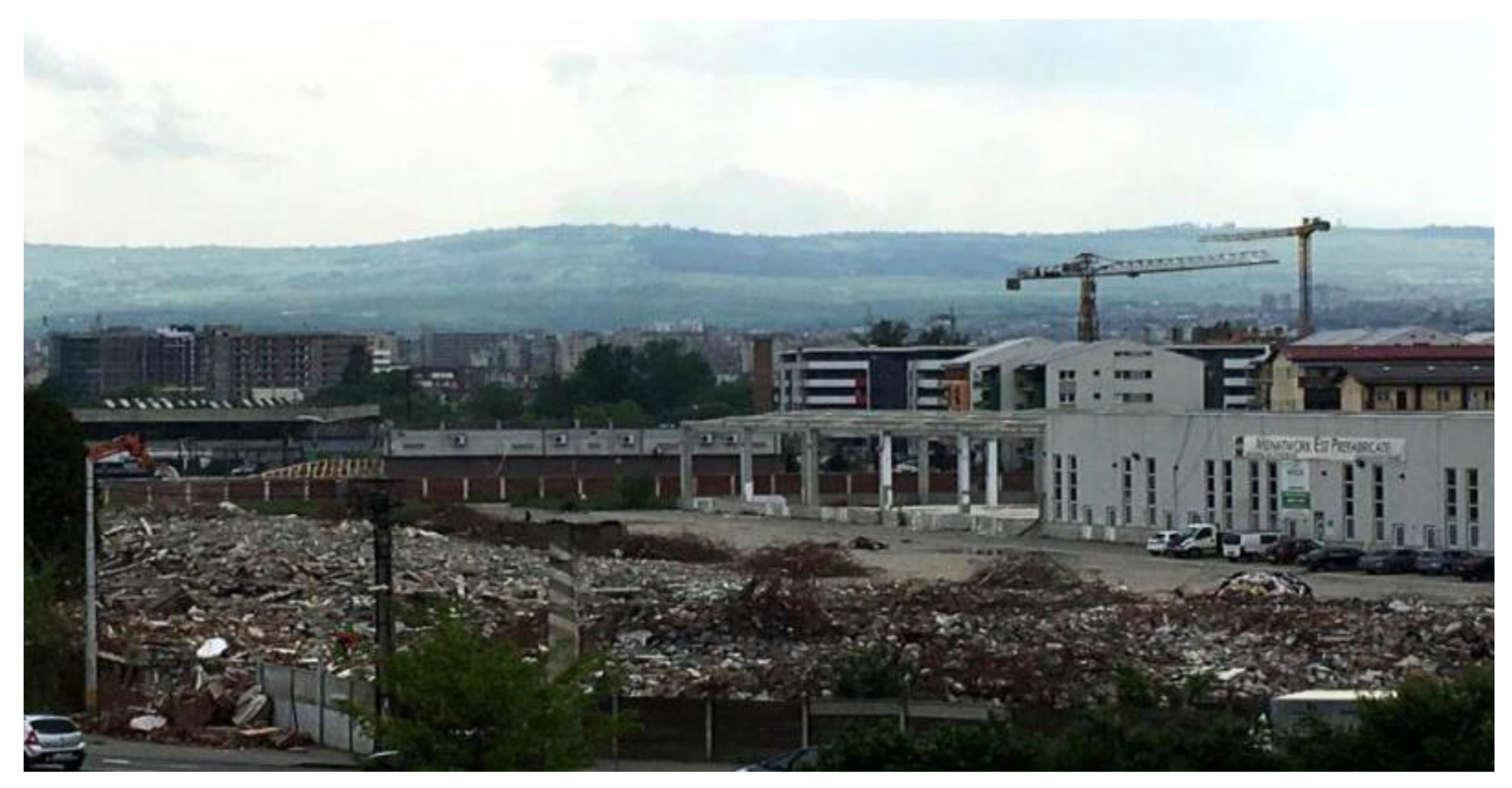

| GCP No. | North (X) | East (Y) | Elevation (Z) |
|---|---|---|---|
| 1 | 589,457, 1407 | 394,185, 6726 | 327, 9649 |
| 2 | 589,585, 7798 | 394,176, 5471 | 327, 7871 |
| 3 | 589,537, 2708 | 394,019, 1188 | 328, 5304 |
| 4 | 589,426, 2579 | 394,109, 4945 | 328, 4598 |
| 5 | 589,397, 7066 | 394,255, 7102 | 327, 6988 |
| 6 | 589,381, 7704 | 394,191, 0005 | 327, 9141 |
Disclaimer/Publisher’s Note: The statements, opinions and data contained in all publications are solely those of the individual author(s) and contributor(s) and not of MDPI and/or the editor(s). MDPI and/or the editor(s) disclaim responsibility for any injury to people or property resulting from any ideas, methods, instructions or products referred to in the content. |
© 2023 by the authors. Licensee MDPI, Basel, Switzerland. This article is an open access article distributed under the terms and conditions of the Creative Commons Attribution (CC BY) license (https://creativecommons.org/licenses/by/4.0/).
Share and Cite
Naș, S.M.; Bondrea, M.V.; Rădulescu, V.M.; Gâlgău, R.; Vereș, I.S.; Bondrea, R.; Rădulescu, A.T. The Use of UAVs for Land Use Planning of Brownfield Regeneration Projects-Case Study: Former Brick Factory, Cluj Napoca, Romania. Land 2023, 12, 315. https://doi.org/10.3390/land12020315
Naș SM, Bondrea MV, Rădulescu VM, Gâlgău R, Vereș IS, Bondrea R, Rădulescu AT. The Use of UAVs for Land Use Planning of Brownfield Regeneration Projects-Case Study: Former Brick Factory, Cluj Napoca, Romania. Land. 2023; 12(2):315. https://doi.org/10.3390/land12020315
Chicago/Turabian StyleNaș, Sanda Marioara, Mircea Vasile Bondrea, Virgil Mihai Rădulescu, Raluca Gâlgău, Ioel Samuel Vereș, Raluca Bondrea, and Adrian Traian Rădulescu. 2023. "The Use of UAVs for Land Use Planning of Brownfield Regeneration Projects-Case Study: Former Brick Factory, Cluj Napoca, Romania" Land 12, no. 2: 315. https://doi.org/10.3390/land12020315
APA StyleNaș, S. M., Bondrea, M. V., Rădulescu, V. M., Gâlgău, R., Vereș, I. S., Bondrea, R., & Rădulescu, A. T. (2023). The Use of UAVs for Land Use Planning of Brownfield Regeneration Projects-Case Study: Former Brick Factory, Cluj Napoca, Romania. Land, 12(2), 315. https://doi.org/10.3390/land12020315






